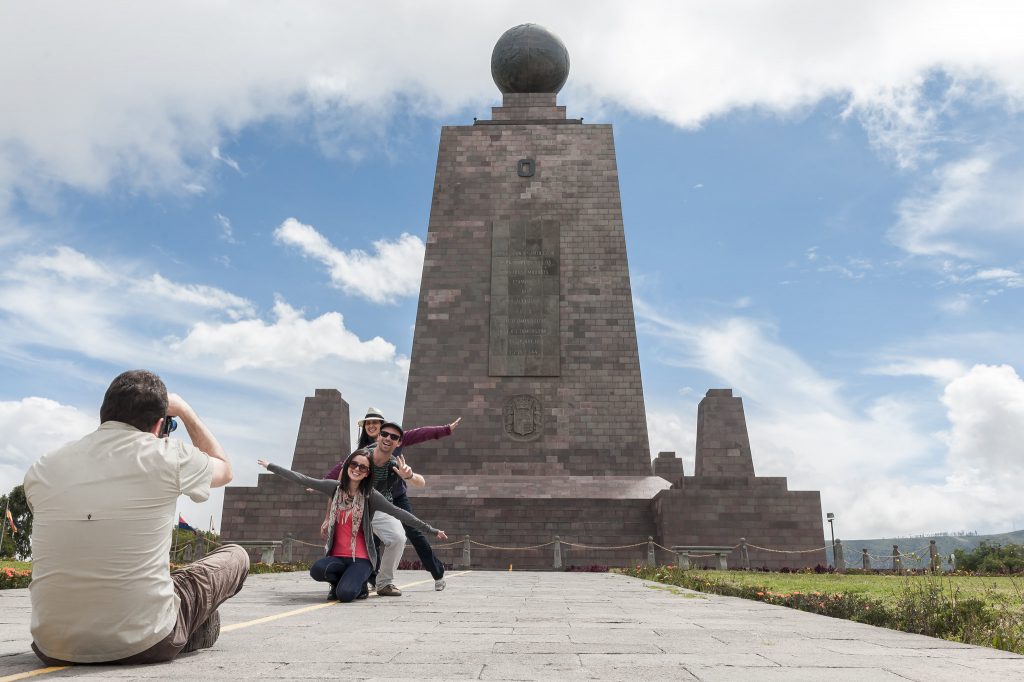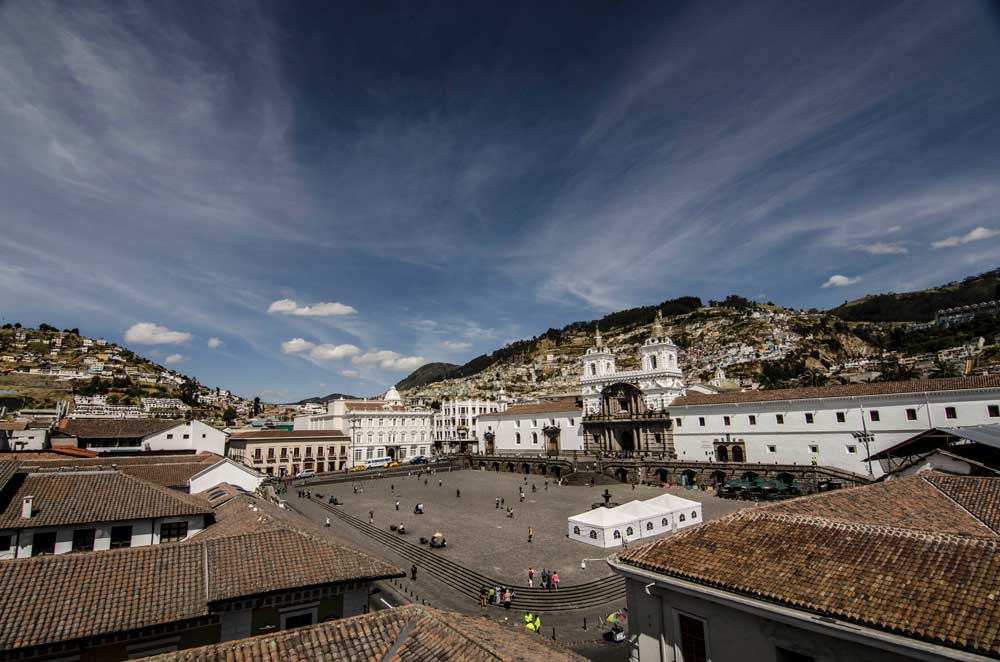The pilot announces on the loudspeaker that we are approaching the city of Quito. Whether it’s your first time or not, when the landing announcement is made, it’s as if you’re getting prepared to watch a suspense movie. And if you’re fortunate enough, you’ll be seated beside the window.
The clouds spread across, mountain tops emerging from the fog, eagerly waving at you from below, trying to get your attention. The highest points display their white peaks with pride. Cotopaxi, Chimborazo, Pichincha, Cayambe and many more, each one standing as an outpost that served as a guide to those who traveled since ancient times, and each selected as a guardian for cities and towns.
The airplane makes way through the Andes and as you get closer to the ground, the first houses appear, sitting at the outskirts of the giants and juggling to avoid falling through the ravines and rivers that were formed thousands of years ago, flowing from the high peaks, a gift of life from above.
The city draws closer and, as if pulled out of an aviation film, the pilot maneuvers with the expertise to reach the open space in the middle. It seems the plane’s wings are about to hit the mountain tops. Before you know it, you’ve landed.
Quito adventure has begun!
The city seats at 2,850 meters above sea level, paving the road through the mountains, stretched horizontally, mainly divided into North, Center and South areas. Just by looking at it from and high viewpoint, anyone can agree it holds something special. Quito is a never-ending labyrinth of mystery, a land of geographical, cultural and resourceful value.
It was also the first city declared a UNESCO World Heritage Site, alongside Galapagos. There is so much to experience that a mere few days won’t be enough to absorb all Quito has to offer. It holds attractions for all types of visitors, starting with its natural attractions, its mountains, and volcanoes.
Rucu Pichincha
“Rucu” means old in the Quechua language) and its sidekick Guagua Pichincha (“Guagua” means child), are the principal safe-keepers of the city.
Located only 16 kilometers away, it has easy access for any nature fans, its main one, the ‘Teleférico’ or cable car.
Due to the altitude of 4,050 meters over sea level it reaches, it is recommendable to visit this attraction on a sunny day to get a magnificent view of the city from above.
If you dare to try an even bigger challenge, you can venture towards reaching the top of Rucu Pichincha crater (4,696 meters over sea level), with the necessary equipment and a specialized guide to direct you.
It is important to remember something when you’re in Quito: the altitude! In order to prevent mountain sickness, make sure you take it easy on the first steps. If you are one of the fortunate ones, from above, you’ll be able to catch a glance of the other seven volcanoes surrounding the city: Antisana, Atacazo, Cayambe, Cotopaxi, Iliniza, Pululahua, and Sincholagua.
The middle of the world
Quito is not only characterized by its settlement among the mountains but one of the places that are closest to the sun because of its location on the equator. The monument of the center of the world is an emblematic reminder of the origin of Ecuador’s name.
What better way to be in two places at once than to have one foot on each hemisphere? And as you’re here, we encourage you to get to know more about the city’s strategic location. We challenge you to place an egg on top of a nail at the Intiñan museum and solve the enigma of why water flushes to one side on one hemisphere, the opposite on another hemisphere and doesn’t turn in the equator.
Be a part of the group of tourists who experience Quito at any level. Quito is known for being the city with the best-preserved historical heritage located in the center of the city. The Panecillo statue stands tall and proud, waving from its point indicating the separation between the center and south of the city, guiding you through.
Let yourself be immersed in a diverse culture that has become an icon in Latin America through visiting churches and museums, walking down the stoned and narrow streets of old times, picturing Chulla Quiteños singing and serenading girls who stood on the narrow balconies, an authentic Latin fairy tale. Admire masterpieces such as La Compañía church, climb to the dome of La Basílica, take a stroll down Plaza de la Independencia and enrich yourself with history in a wide variety of museums located around town.
Gastronomy is a key part of a city’s culture, and you can’t let yourself leave without venturing into Quito’s variety of dishes. La Ronda is a perfect place for a night out, a bohemian style street with singing, dancing, stores, and restaurants.
Try some of the locals’ favorites: empanadas de viento, canelazos, fritada, hornado (both made with pork) and other delicacies and artisan deserts like mistelas, espumilla, dulce de guayaba, figs with cheese and don’t forget that the best cocoa comes from Ecuador! If you’re feeling brave enough, dare yourself to try the “cuy” or guinea pig dish or yahuarlocro (“yahuar” means blood in quechua and “locro” means soup”).
There is always something new to try, something different waiting at every corner. It’s a non-stop exploration of diversity and creativity. Not for nothing, it is referred to a multi-cultural, multi-national and multi-ethnic place.
It combines a set of ingredients that form one outstanding workmanship that people recite in poems and songs and paint landscapes. Give yourself the gift of discovering this complex, yet wonderful city and at it to your check-list as the best adventure of the year!
You may be wondering, how do I begin?
Get to know our tours and packages here and start your trip


Leave a Reply